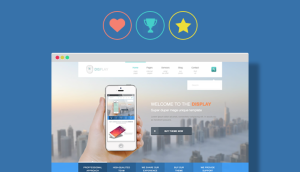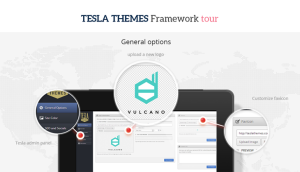What comes to mind when you think of hackers? A talented tech-savvy individual lurking on the net all day looking for potential victims or sites to enter? You could not be more wrong.
Hackers do not analyze every website that they are trying to compromise, but simply execute automated scripts, which can target vulnerable sites.
When it comes to the issue of cybersecurity in the modern world, the human factor is often perceived as the biggest threat or the weakest link that contributes to the security compromise of any technology system. This is equally true for the security of WordPress powered websites.
According to industry analysts, the human user is considered the weakest link in WordPress security chain, due to factors, including:
- The shift of the online marketplace from product-centric to a more user-centric industry
- Increase in the device dependency by the users
- Booming stage for cloud computing platforms that is leading to an exponential amount of data in the online world and causing security vulnerabilities
Irrespective of the technology and sophistication of a WordPress site, its overall security can be easily compromised if it does not consider the human vulnerabilities when designing its security practices.
So, what are these end users doing, or not doing, that makes them the weakest link in the security of WordPress sites?
Irregularities in WordPress Plugins/ Themes Updating
70% of the WordPress installations or more were found to be running outdated versions of the WordPress version on their websites according to industry estimates. This, along with the presence of outdated and deactivated WordPress plugins and themes, are among the primary means of gaining unauthorized access for hackers to your WordPress site.
Most end users and even business enterprises do not pay attention to their website security, brushing it aside as they feel they have more important things to tend to. They do not consider it to be an integral aspect affecting their day to day business operations.
The other issue lies in our inability to attempt a task that seems complicated – if we don’t know it, then it must be difficult. Sure, there are some complications arising from updating the WordPress plugins:
- Installation of WordPress plugins and themes from non-trusted sources can open doors for malware and hackers and can break your site.
- If the update notification for specific WordPress plugins or themes are disabled by the system administrator, the end user is not notified of the availability of the released updates.
- The use of abandoned WordPress plugins and themes, which are not provided with WordPress security updates.
- Performing manual updates of your WordPress plugins and themes may not be practical, particularly if they are running on multiple WordPress sites.
What can you do? It’s always wise enough to choose the top WordPress plugins from WordPress repository so that you can enable automatic updates without worrying about the security threat.

Purchase of Pirated WordPress Plugins/ Themes
The purchase and use of pirated WordPress plugins and themes on your website can pose serious security threats from hackers. WordPress users download free and pirated versions of premium WordPress plugins and themes, which are easily available on file sharing websites. These pirated copies pose multiple security risks, due to the following reasons:
- They can contain harmful or malicious code, such as malware or ransomware.
- They are not the updated to the latest version, hence can contain security flaws, which can be used by hackers to gain illegitimate access to your website.
- The latest updates to the plugin or theme are not available for pirated versions.
- Being illegal, no professional customer support is available from the team of WordPress Developers, who developed the original plugin or theme.
What can you do? This one is simple, believe it or not. Don’t buy pirated WordPress plugins/themes.
License Expiry
WordPress Slider Revolution plugin in 2014 was among the first to shed light on the security issues associated with users not renewing their WordPress license. WordPress users without the required license key are unable to update their premium plugins, which leads to security risks. Premium WordPress plugins and themes are also expensive to renew; hence most WordPress users continue to work with expired license plugins.
A common weak point among WordPress website users is their ignorance about the need to renew the license for their website. While WordPress websites continue to work smoothly even after license expiry, they will be incompatible with the latest WordPress software and browser versions. Along with critical bug fixes, the latest enhancements and new features for the WordPress website (along with the bundled plugins and themes) are no longer available.
What can you do? Understand and educate yourself on the security issues that crop up as a result of non-license renewal. Sure, it may be expensive to renew or buy a new license, but is it worth it to stay without?
Sharing Multiple Websites on a Single Hosting Account
Many hosts allow you to run multiple instances of WordPress within one shared hosting account. Most WordPress users prefer to do this to save money, as they can pay for a single host and then host multiple sites within that account.
However, WordPress users must also consider the security risks associated with the convenience of hosting and sharing multiple websites on a single WordPress hosting account. By hacking or gaining control of any one of the multiple sites, hackers automatically gain unauthorized access to the other websites, thus allowing them to make additional damage. This not only makes the process of cleaning or restoring the websites (following the attack) more difficult and time-consuming, but also makes troubleshooting the security flaw difficult.
What can you do? To avoid a major security crisis, users must follow these smart suggestions when configuring multiple WordPress sites on a single hosting account.
Lack of SSL Encryption on WordPress Websites
Implementation of SSL (Secure Socket Layer) encryption on your WordPress website is effective in securing the WordPress Admin panel. By ensuring safe and secure data transfer between the browser and the web server, SSL ensures that hackers find it difficult to breach and connection and gain illegal access. SSL encryption certificate also improves your website ranking with Google search engine, thus ensuring higher web traffic to your website.
While getting SSL certificate for your WordPress website is easy, implementing SSL encryption can be complex and expensive, hence most WordPress users refrain from it.
What can you do? Free and open source SSL certificates such as Let’s Encrypt are both economical and easy to install on your WordPress sites.

Mismanagement of Unused WordPress Plugins
According to various industry reports, vulnerable WordPress plugins are the leading and most common method used by hackers to gain unauthorized access to WordPress sites. Hence, managing the security aspects of your WordPress plugins must be the top priority for WordPress users.
In addition to downloading WordPress plugins from safe and reputable sites, a regular check of the number of plugin codes running on your website can help determine its vulnerability aspect. Many WordPress users install multiple WordPress plugins at the start of a project, which are then either not used or updated.
What can you do? Abandoned WordPress plugins pose a higher security threat than active and updated plugins, hence it is recommended to remove them from your plugins folder. To declutter is the key!
Improper Management of User Credentials and Password
Many WordPress users fail to implement the basic security practices related to user credentials and password management, thus resulting in a higher security risk. This includes the use of the default credentials provided by your system administrator and not replacing them with a unique username and password.
While registering on multiple accounts, there is a tendency to use the same credentials because it is convenient and easy to remember. However, this poses a security concern as hackers, who can break into one user account, will find it easy to damage other accounts too.
What can you do? Make use of Password Managers (such as 1Password), which can securely store multiple passwords, while users only need to remember one password to gain access.
Improper Management of User Permissions
Improper management of user permissions is another serious security threat involving end users. Configuring user administration, including those that need user admin rights for gaining wider access to your website must be managed in an efficient mode.
The use of public places such as cafes and restaurants to log in to your private website means that critical data could be transmitted over unsecured networks.
What can you do? Depending on user roles, appropriate permissions and privileges must be allocated to users. Those with admin privileges must never share their credentials with other users, but instead, create a separate account for them. While accessing the net from public places, ensure that the VPN in use is equipped with strong security measures to avoid stealing of important information.
Conclusion
In this connected world, no website, irrespective of its branding and importance, is safe from a potential cyber-attack by a hacker. It is critical for WordPress users to follow the best security practices recommended for WordPress sites, in order to offer resistance and safeguard it from a potential hack.
Being an important cog in the running and maintenance of WordPress-powered websites, the human end user must be properly trained and educated on the security aspects, in order to minimize their errors. While no website can be made 100% hacker safe, security risks can be minimized by following proper guidelines, while still maintaining the ease of website usability.
–
 I’m Akshat Choudhary, the founder and CEO of BlogVault, MigrateGuru & MalCare.
I’m Akshat Choudhary, the founder and CEO of BlogVault, MigrateGuru & MalCare.
I love building products that solve real problems for real people, and have been building systems and products since 2005.
My core beliefs behind building any product are to make sure the end-user doesn’t need assistance… and to assist them in the best possible manner if they need it.




